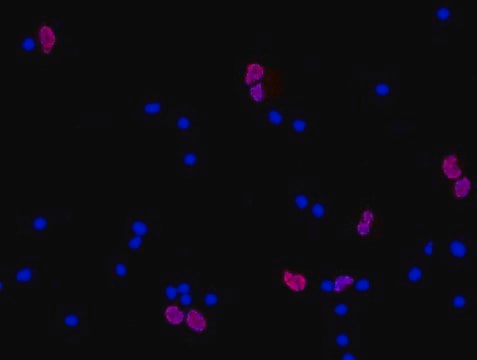MABN50A4
Anti-Olig2 Antibody, clone 211F1.1, Alexa Fluor™488 Conjugate | MABN50A4
clone 211F1.1, from mouse, ALEXA FLUOR™ 488
Sinónimos:
Oligodendrocyte transcription factor 2, Oligo2, Class B basic helix-loop-helix protein 1, bHLHb1, Class E basic helix-loop-helix protein 19, bHLHe19, Protein kinase C-binding protein 2, Protein kinase C-binding protein RACK17
About This Item
Productos recomendados
biological source
mouse
Quality Level
conjugate
ALEXA FLUOR™ 488
antibody form
purified immunoglobulin
antibody product type
primary antibodies
clone
211F1.1, monoclonal
species reactivity
rat, mouse
species reactivity (predicted by homology)
human (based on 100% sequence homology)
technique(s)
immunocytochemistry: suitable
isotype
IgG2a
NCBI accession no.
UniProt accession no.
shipped in
wet ice
target post-translational modification
unmodified
Gene Information
human ... OLIG2(10215)
General description
Immunogen
Application
Neuroscience
Developmental Neuroscience
Quality
Immunocytochemistry Analysis: A 1:100 dilution of this antibody detected Olig2 in rat oligodendrocyte precursor cells.
Target description
Physical form
Storage and Stability
Analysis Note
Rat oligodendrocyte precursor cells
Legal Information
Disclaimer
Not finding the right product?
Try our Herramienta de selección de productos.
Storage Class
12 - Non Combustible Liquids
wgk_germany
WGK 2
flash_point_f
Not applicable
flash_point_c
Not applicable
Certificados de análisis (COA)
Busque Certificados de análisis (COA) introduciendo el número de lote del producto. Los números de lote se encuentran en la etiqueta del producto después de las palabras «Lot» o «Batch»
¿Ya tiene este producto?
Encuentre la documentación para los productos que ha comprado recientemente en la Biblioteca de documentos.
Nuestro equipo de científicos tiene experiencia en todas las áreas de investigación: Ciencias de la vida, Ciencia de los materiales, Síntesis química, Cromatografía, Analítica y muchas otras.
Póngase en contacto con el Servicio técnico








